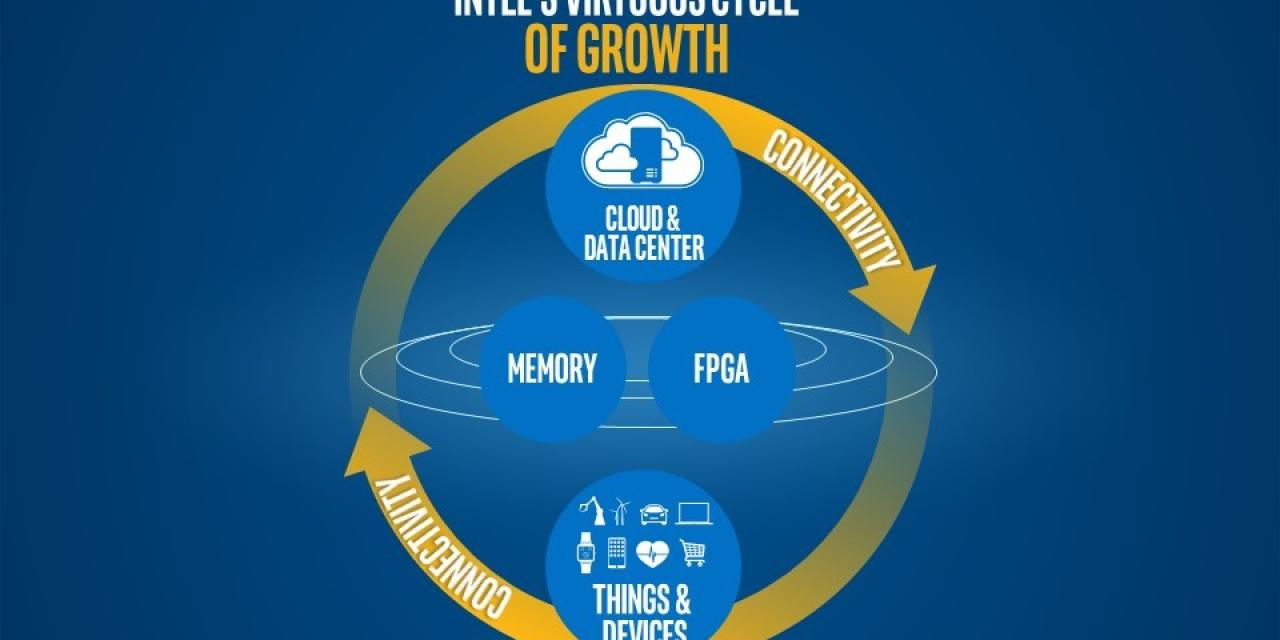
Less than a week after announcing a company-wide restructuring that involves cutting down 12,000 jobs (11% of the company's workforce), Intel CEO Brian Krzanich shared his vision for a radical shift in the company's focus.
Brian – and Intel behind him – believes that we are moving past the PC era to the cloud computing era. Wikipedia defines cloud computing as "a kind of Internet-based computing that provides shared processing resources and data to computers and other devices on demand." Cloud computing has already become an integral part of our day-to-day life. Most probably the majority of our readers have used Google Docs or Office 365 to write a document. Using storage services such as Google Drive and DropBox is also a form of cloud computing. Cloud computing has also made its way to game consoles with Microsoft allowing Xbox One game developers to offload some computation to its cloud servers and Sony utilizing it to enable its PlayStation Now game streaming service.
Brian believes that the push towards cloud computing is augmented by 2 trends: the movement towards an "always connected" world and the "internet of things." "The term 'Internet of Things' tends to be ambiguous, so it’s important to define it and then identify what segments Intel will drive," explained Brian. "Things range from PCs to what we now call the Internet of Things. The Internet of Things encompasses all smart devices – every device, sensor, console and any other client device – that are connected to the cloud. The key phrase here is 'connected to the cloud.' It means that everything that a 'thing' does can be captured as a piece of data, measured real-time, and is accessible from anywhere."
With those trends in mind, Intel intends to increase its footprint in data centers by providing innovations in high-performance computing, big data and machine learning capabilities. Intel will also focus on "autonomous vehicles, industrial and retail" as its primary growth drivers of the Internet of Things.
Intel is also investing heavily in technologies that support the always connected internet of things and cloud computing ecosystem. This includes investing in FPGA and memory chips for data centers and investing in end-to-end 5G networking which is shaping up to be the de facto standard for always-connected high bandwidth mobile networks.
On the manufacturing side of the business, Brian assured that the transition from 14nm fabrication to 10nm is going according to plan and that the company has plans to move to 7nm then 5nm and beyond in accordance with Moore's law.
"We are in a time when technology is valued not just for the devices it produces, but for the experiences it makes possible, Intel CEO concluded. "Intel will lead in this new era by remaining true to our history as inventors and makers, as a global leader in manufacturing, as world class innovators. We will also lead by becoming a company with a broader focus, and with sharper execution. In doing so, we will create lasting value for our customers, partners and shareholders, and achieve our mission to lead in a smart, connected world."
VIA: Intel .








